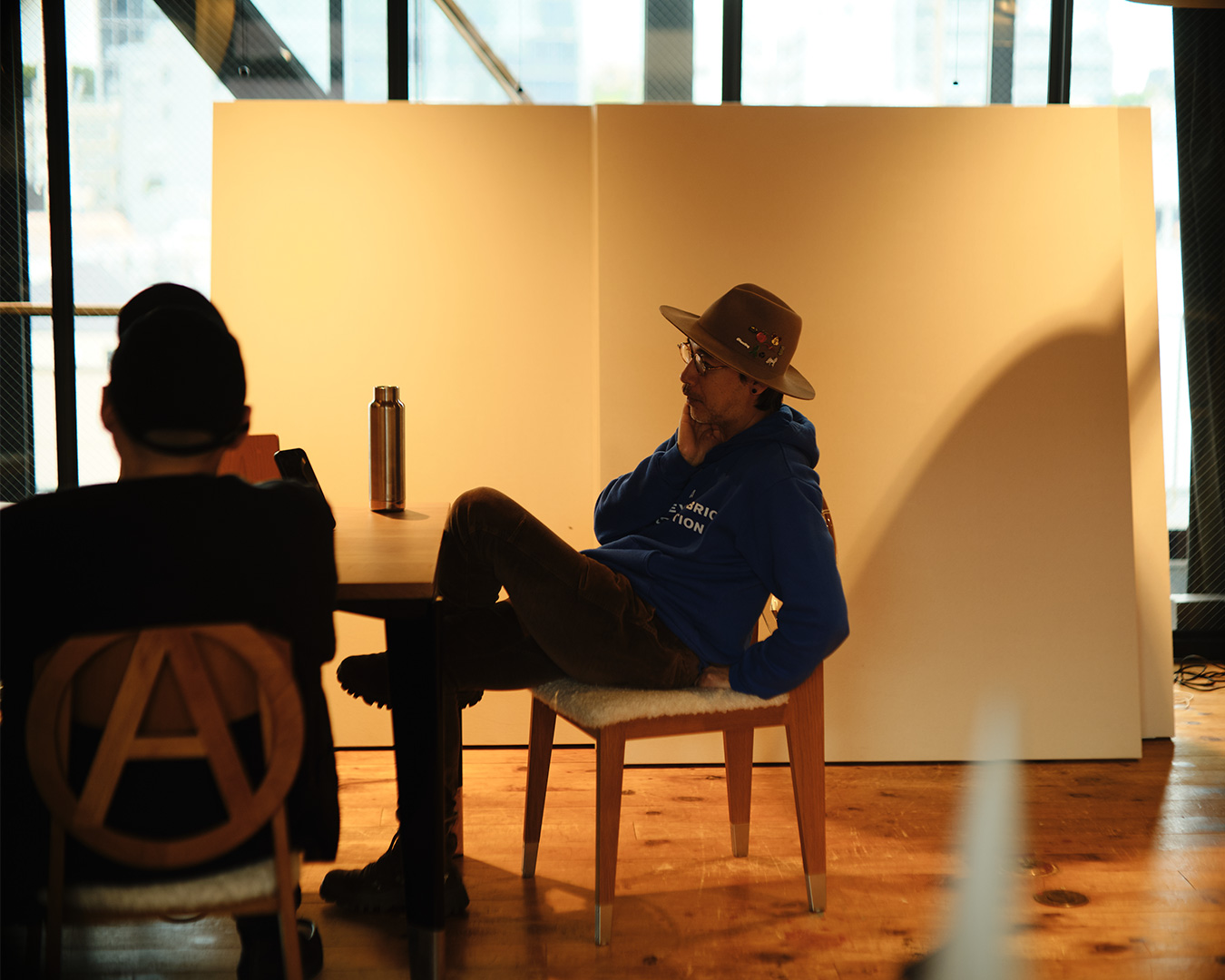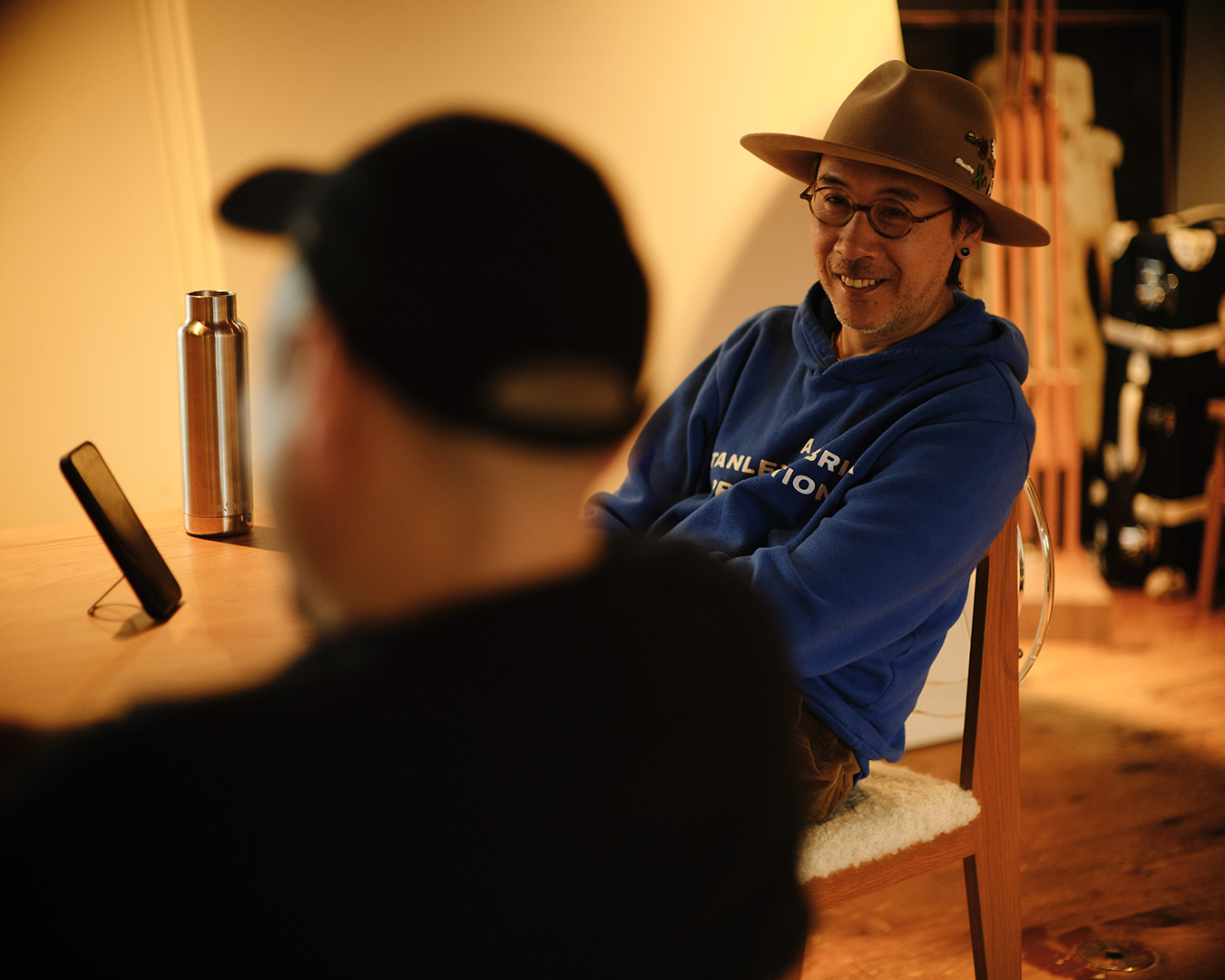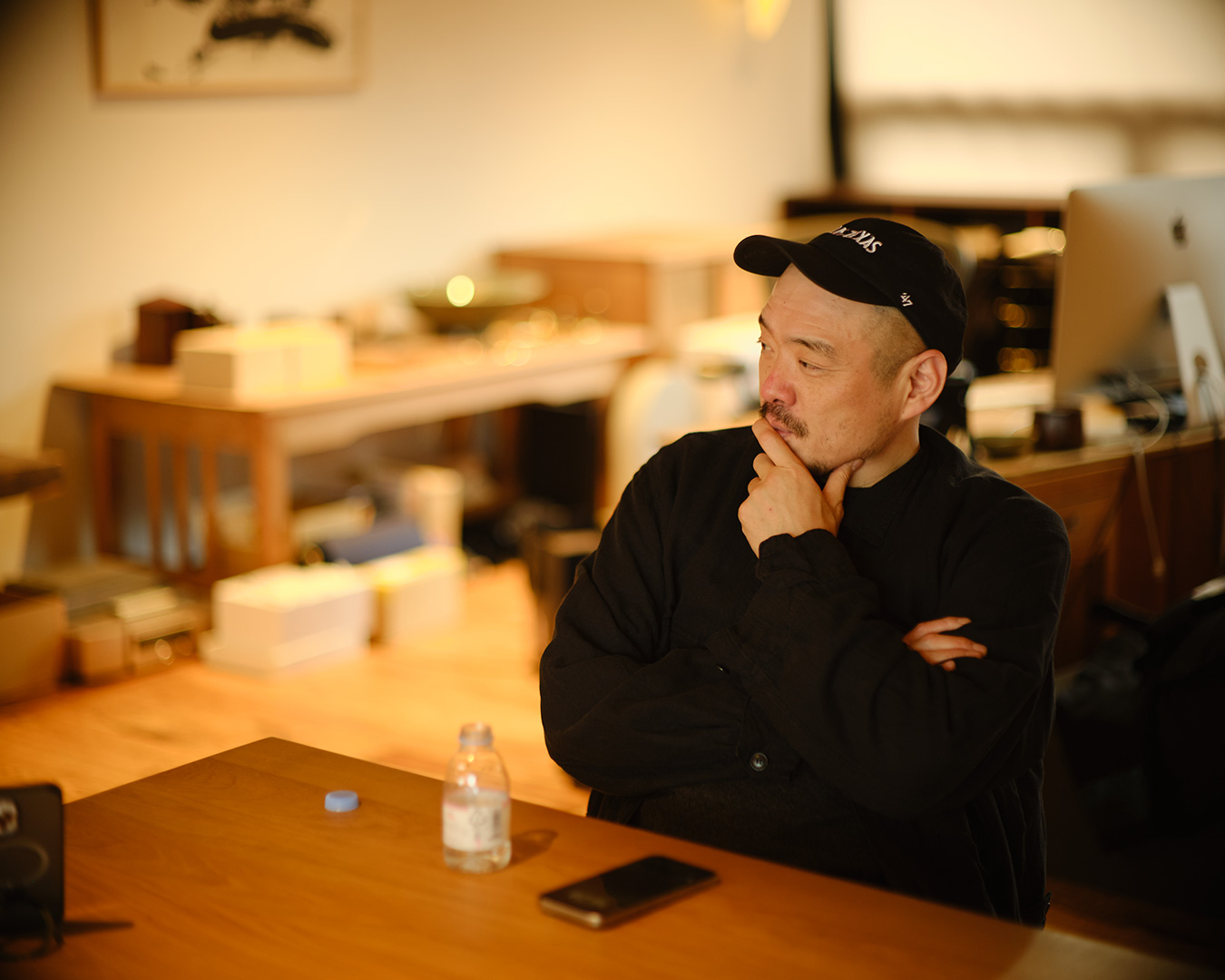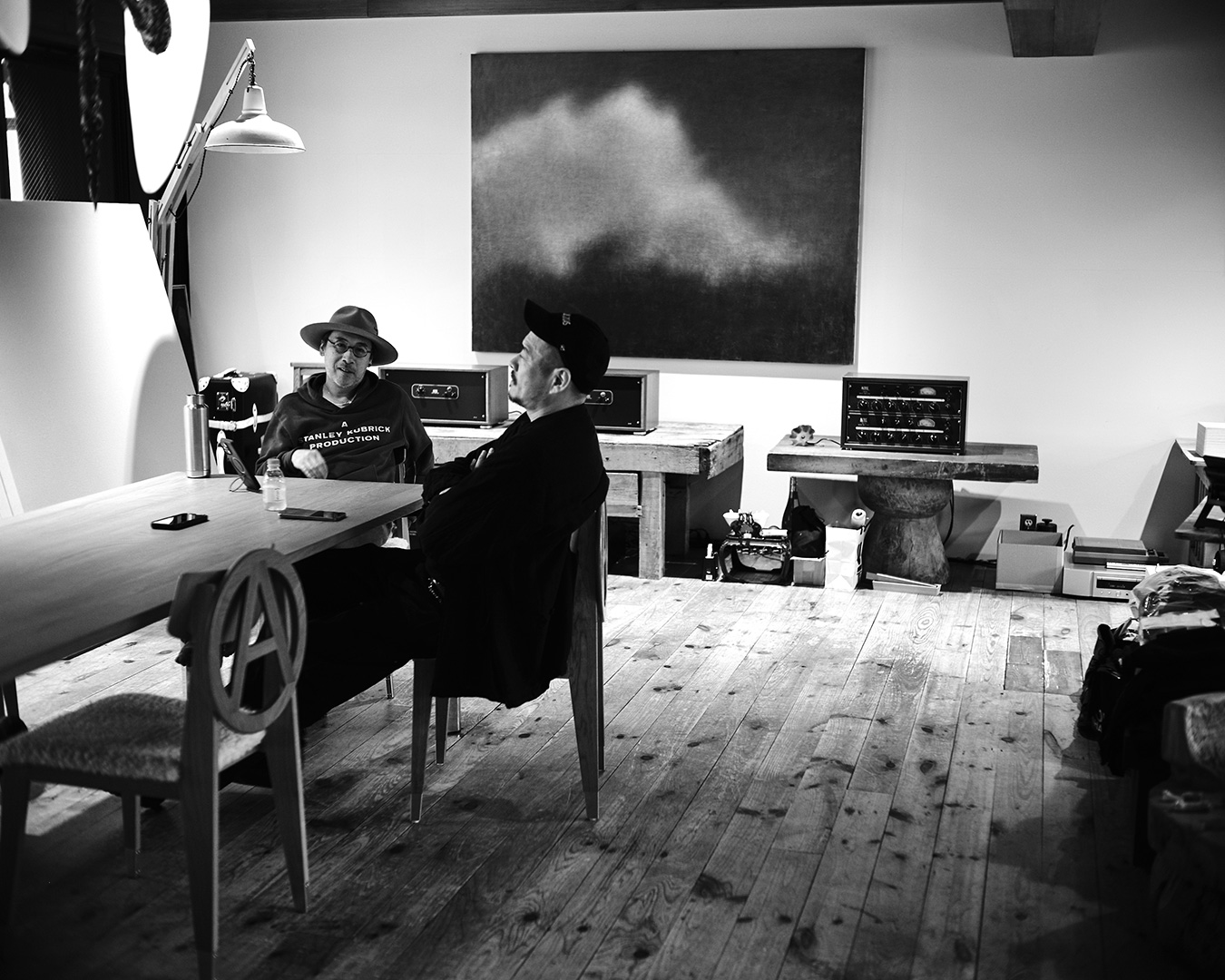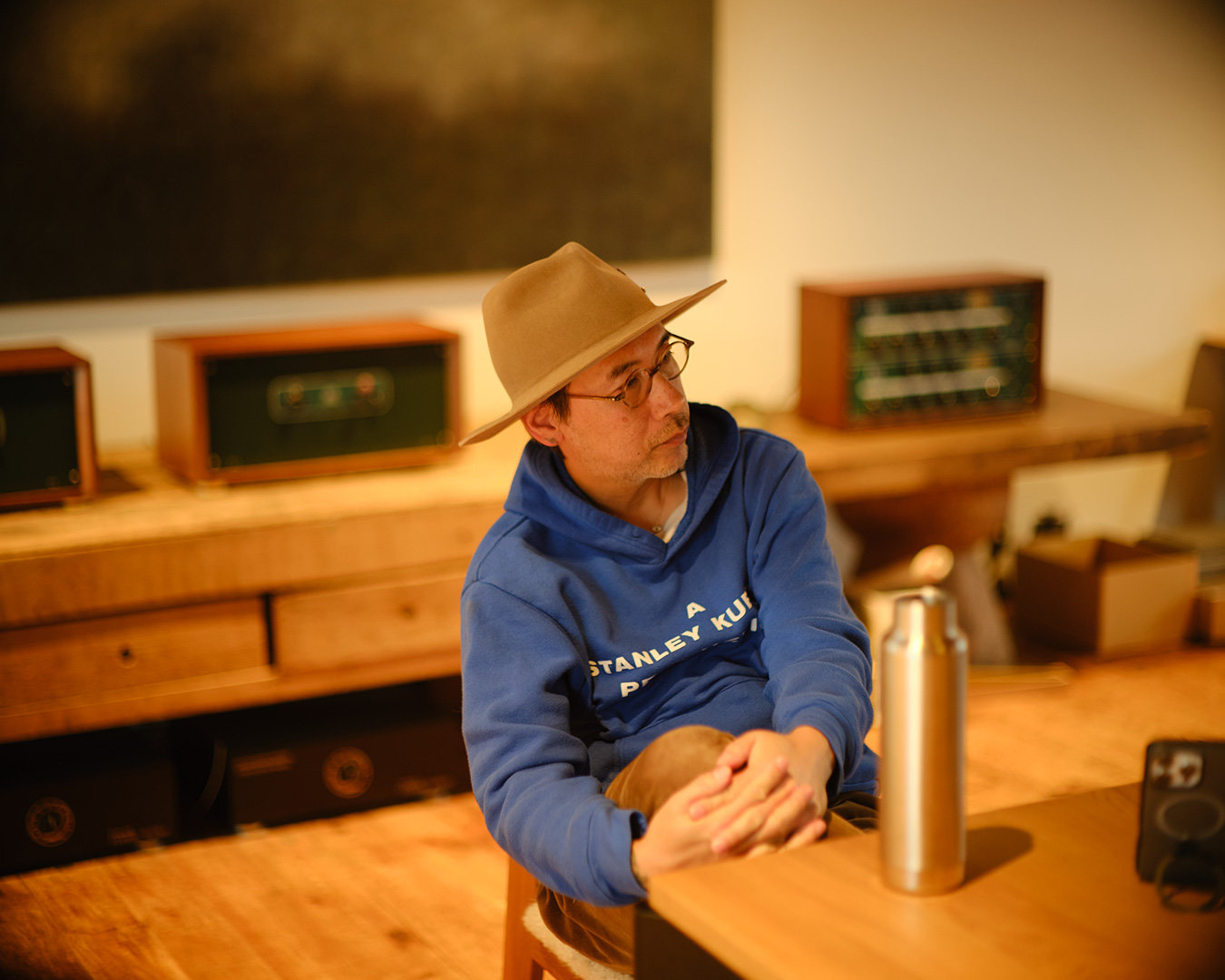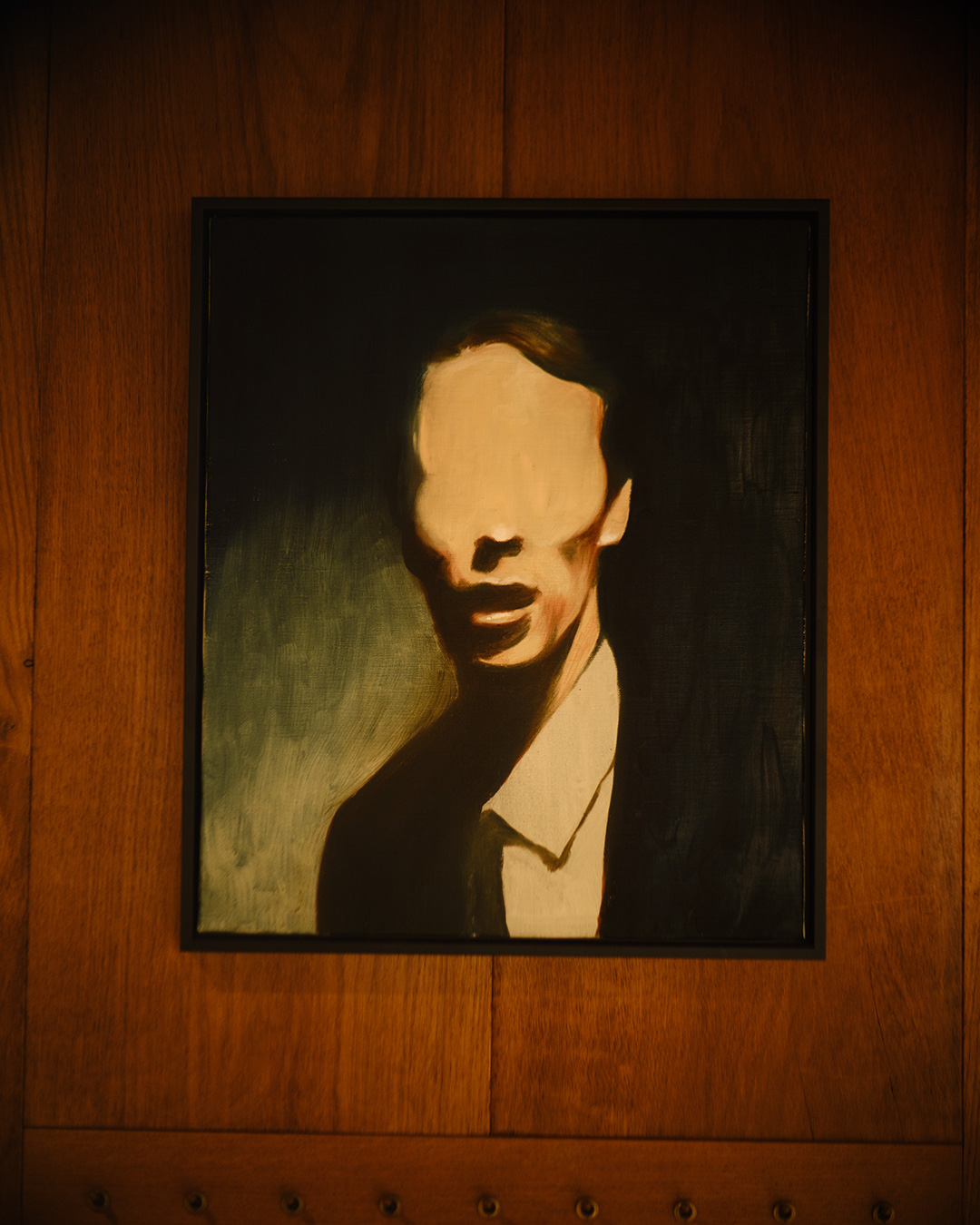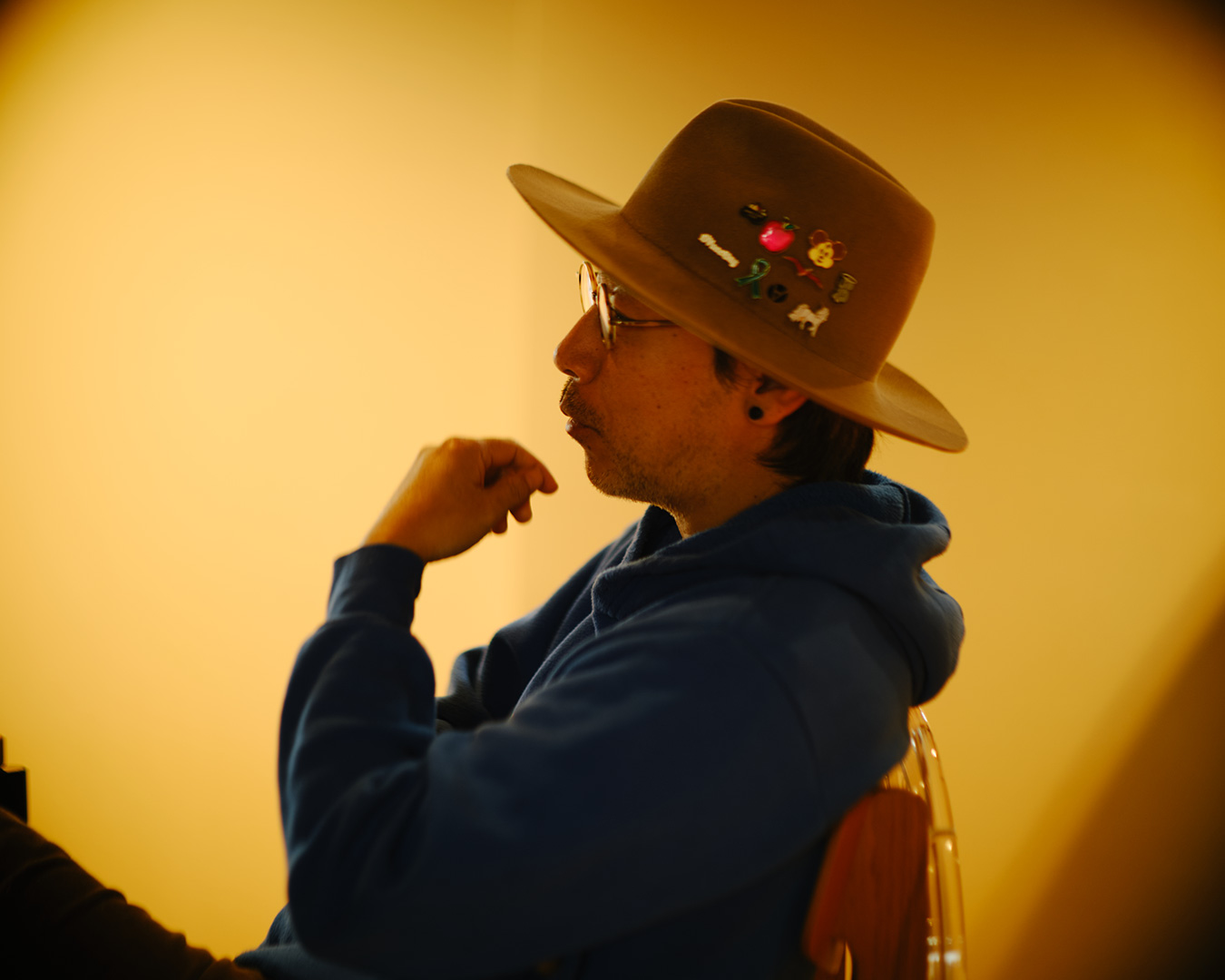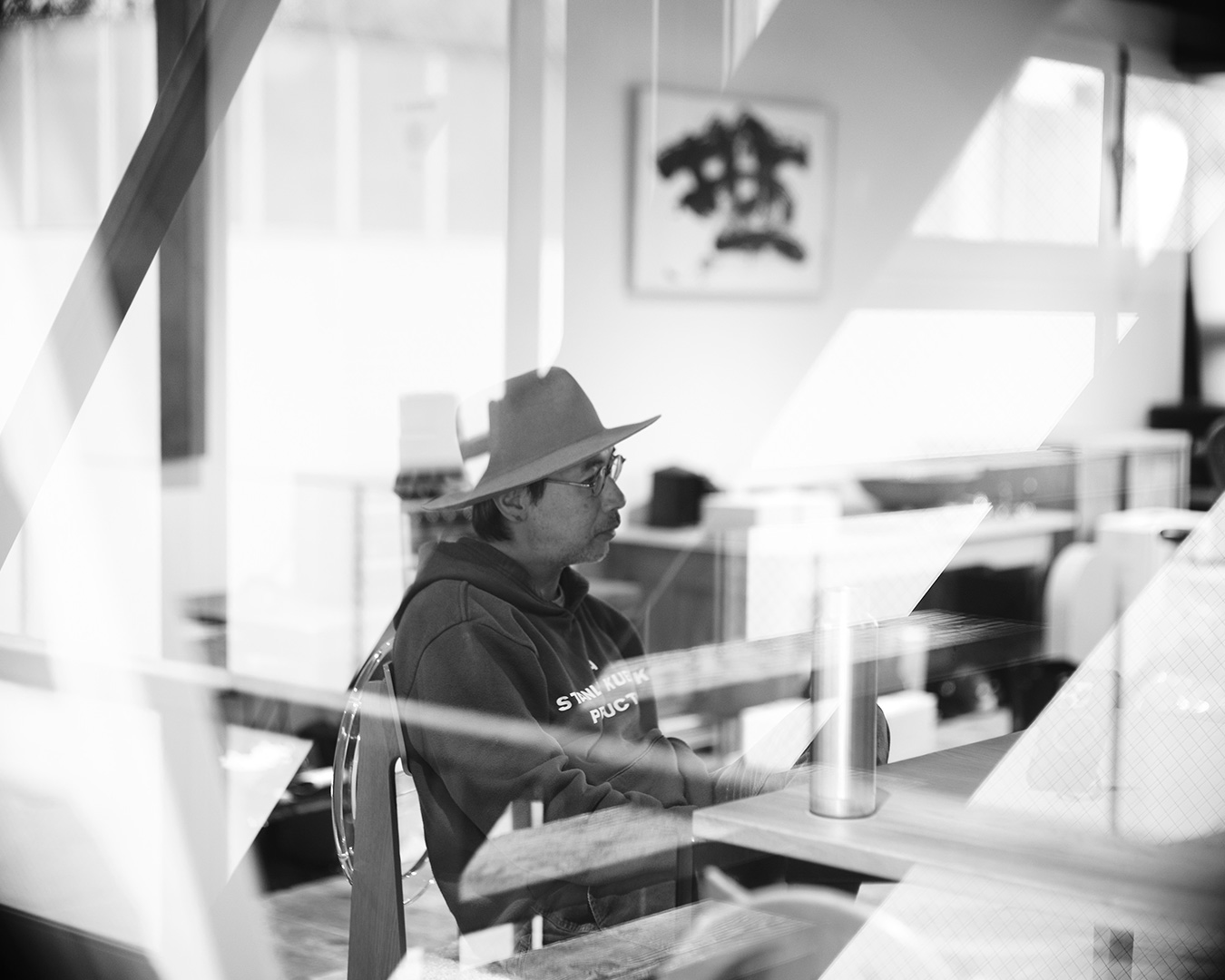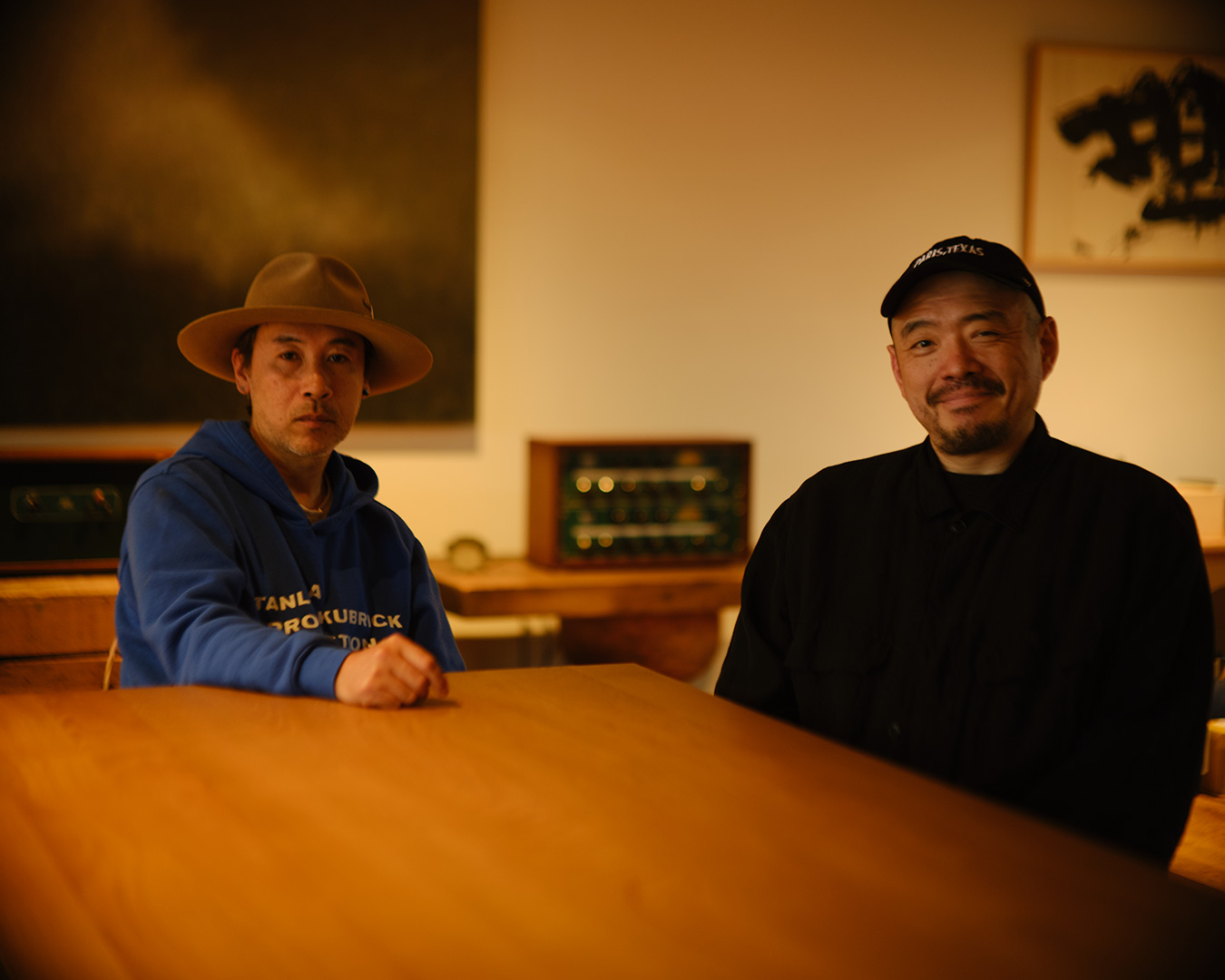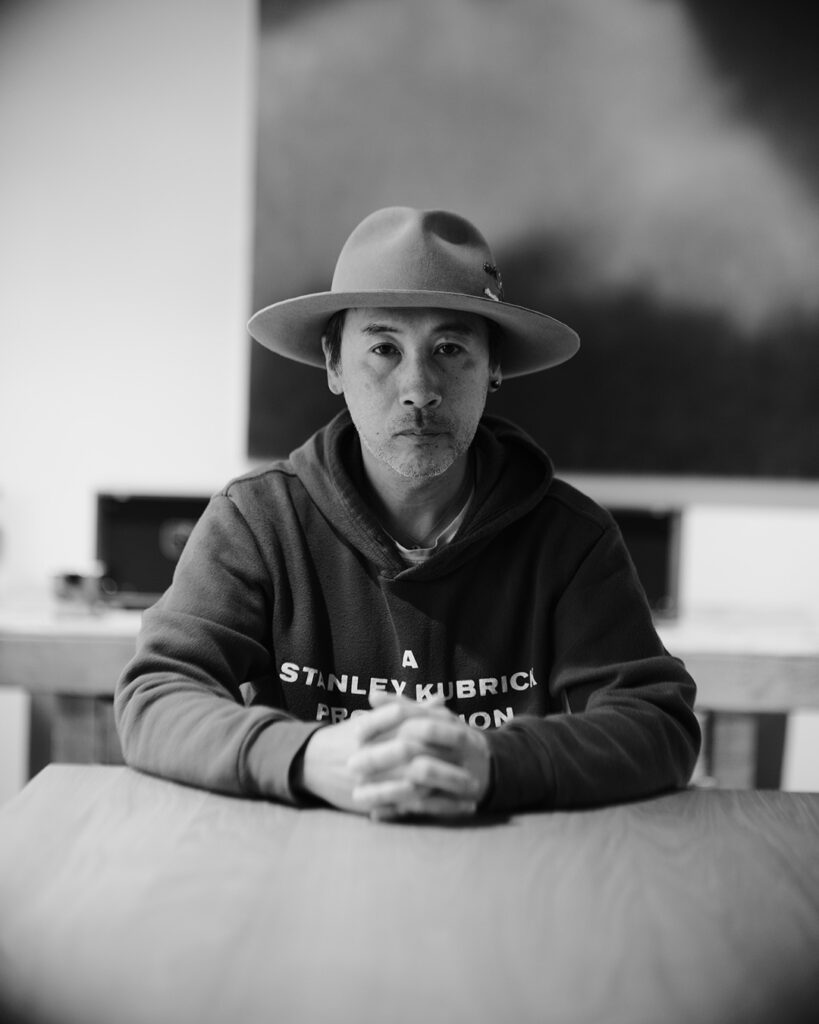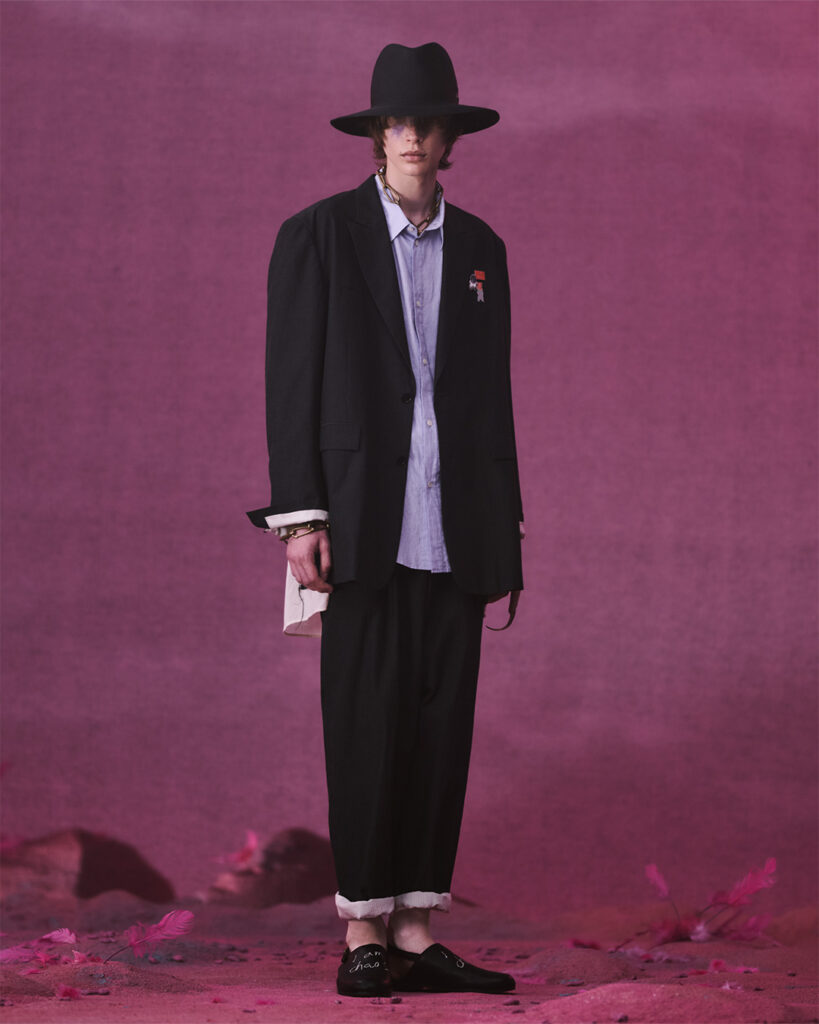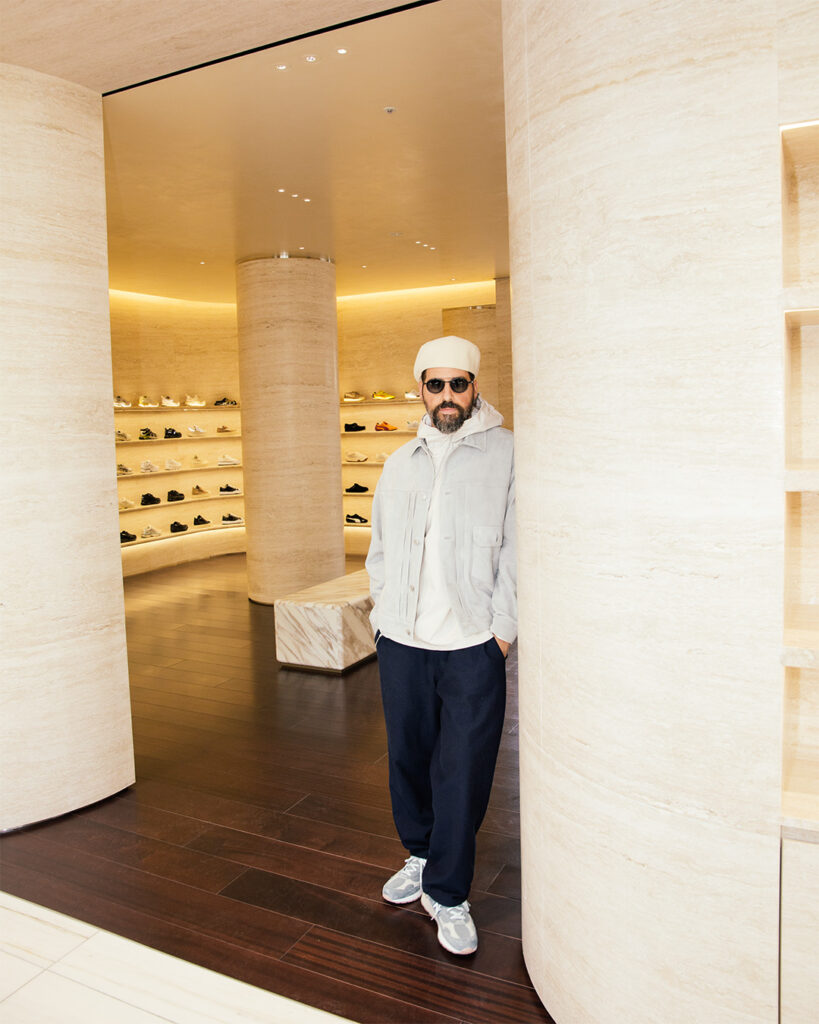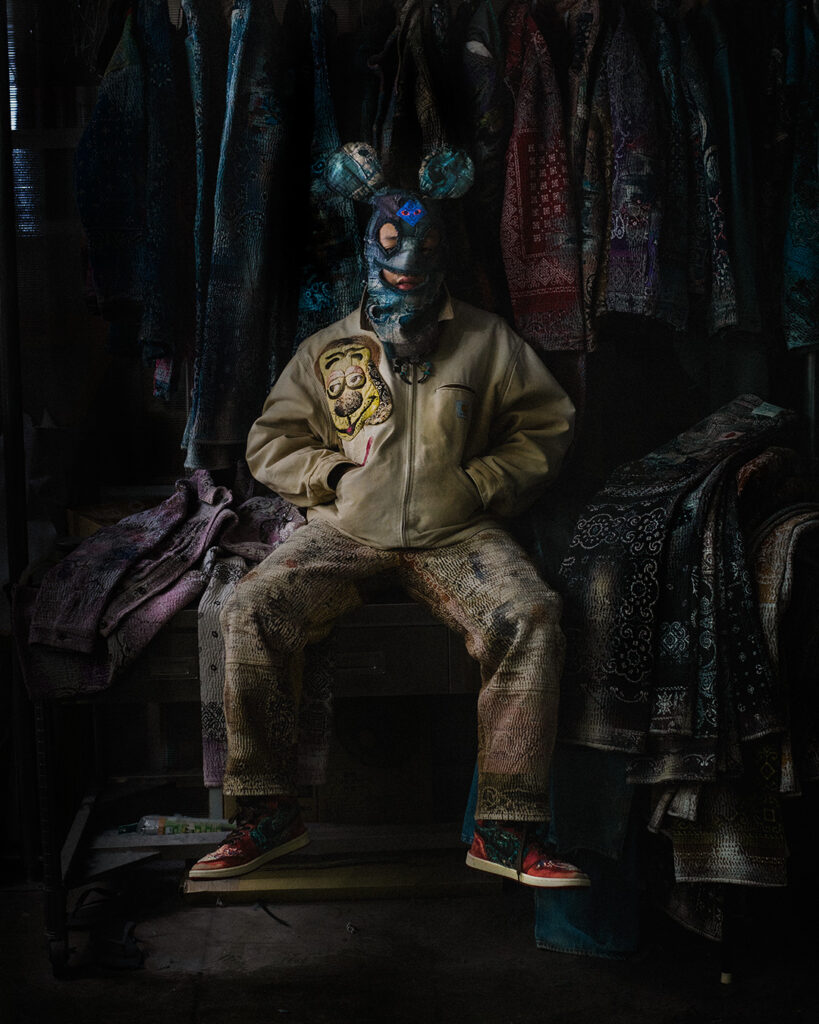It’s no exaggeration to say that if all the Japanese brands were to suddenly vanish from Paris Fashion Week, the event itself might begin to unravel. For decades, Japanese designers have been a driving force in global fashion. And when it comes to influence, few can rival Jun Takahashi—aside from Rei Kawakubo—whom the late Virgil Abloh once named as one of his personal heroes.
Takahashi founded Undercover in 1990 while still a student at Bunka Fashion College. After graduating, he opened the now-legendary store Nowhere with Nigo in 1993. The following year, he staged his first runway show and launched AFFA, a joint project with Hiroshi Fujiwara. Until the early 2000s, his collections were primarily based in Tokyo.
His explosive Paris debut came with the Spring/Summer 2003 collection Scab, and despite brief hiatuses and pandemic disruptions, he has continued to present his singular vision on the Paris stage for over 20 years—across both women’s and men’s fashion. His recent 35th anniversary collection, but beautiful 4…, shown in March 2025, is still fresh in memory.
Over the years, Takahashi has twice been selected as a guest designer for Pitti Immagine Uomo (in 2009 and 2018), and he’s collaborated prolifically—with streetwear powerhouses like Supreme and Off-White, as well as a capsule collection with Valentino in 2019. He’s also led joint projects with Nike (Gyakusou), Uniqlo (UU), and The North Face (Soukuu), and most recently, launched a new line with GU called UG in March 2025. What began as a small batch of hand-printed graphic tees has, over 35 years, grown into a brand that has repeatedly redefined the boundaries of fashion. (One can only hope for another designer like Jun Takahashi to emerge from Japan again.)
In this feature, Takahashi sits down with longtime friend and fellow creative Daisuke Gemma. Together, they discuss their respective experiences in Paris, their distinct approaches to creativity—whether in clothing, painting, or DJing—and the upcoming 35th anniversary project to be held at V.A. Tokyo.
I still clearly remember when Michael Kopelman introduced me to you in Paris in 2002, just before your first show there. That collection was incredible. Do you still feel a strong connection to that debut in Paris?
That first show—I was way too fired up. Looking back now, I think I went a little overboard. But sometimes, going overboard leaves a stronger impression than you expect. On the flip side, something more restrained can also end up feeling more powerful. That balance between too much and just enough is really interesting to me.
What was the situation like when you first decided to show in Paris?
It didn’t happen all at once—it was a process. I’d been showing in Tokyo for a while, but the response in Japan was pretty subdued. People didn’t really give feedback or engage with the work critically.
They tend not to dig too deeply.
Exactly. Back then, I’d put on two shows in Tokyo each season—one for friends, and one for press and journalists. At the friends’ show, people would start wandering backstage before the show even began. They’d be drinking, getting totally smashed—it was a party. Afterward, they’d say things like “That was great!” but I never really knew what part they thought was good. I guess they just had a good time.
Well, “good” is still a meaningful reaction in its own way.
Yeah, of course I appreciated it. But at the same time, I wanted real, thoughtful feedback. And I wasn’t getting that in Tokyo. So, I started wanting to have professionals from other countries see the work. Plus, Rei Kawakubo said to me, “Isn’t it time you tried showing in Paris?” That had a huge impact on me. Without those two things—my own curiosity and her advice—I’m not sure how things would have turned out. That said, I probably would’ve ended up there eventually anyway.
Is there a particular Paris collection that stands out in your memory?
Probably Purple from 2007. That season’s theme was “sexy.” Until then, I’d been doing Paris shows with the same energy and vibe I brought from Tokyo, but I started feeling like something was missing.
What I realized I lacked was a sense of “feminine elegance” or sensuality. It was something I’d always struggled with—but because of that, I decided to lean into it and make it the theme. And I ended up really enjoying it. Figuring out how to strip things down while still maintaining elegance—trying to find that balance was fascinating.
That season helped me start to grasp what elegant and sexy could mean in my own terms. I think it was the first time I really got a hold of something that hadn’t existed in my work before.
Recently, I saw this American account on Instagram that collects Japanese designer pieces, and they were so excited to post something like, “Undercover isn’t just punk—it does feminine too!” That must’ve been around that same season. Personally, I really loved the AW07 knitwear collection. I thought it was incredibly well thought out.
That one was great too. Everything was made from knit, but we made sure it was still functional. We used high-tech materials that could regulate temperature—like fabrics from this company called Schoeller—and created pieces that had a kind of blanket-like feel, but all in knit. It was a mix of technology and craft. We were experimenting with a lot of different ways to express that idea.
With your shows, it often starts off quite calm, and we’re watching like, “Oh, this is the theme this season,” and then in the last five or so looks, you throw something totally wild out there. It’s something we viewers really look forward to. The recent but beautiful 4… was incredibly emotional—I was moved.
Doing that collection, I realized something—even though the theme was the same, once I actually started designing, I ended up redoing everything from scratch. It became a totally new collection. And since the original was from 21 years ago, younger audiences today didn’t know it, so it was received as a brand-new work. It felt fresh to me too, and I really enjoyed it. I think this kind of approach is totally valid. The theme was already set, which made things easier in a way.
Creating a world specifically for the runway can come together really well—or it can fall short. Every time is a challenge. Take the bear dress from this last show—I had to redo that one over and over. At one point, I was honestly sick of it. Same with the piece covered in buttons—I kept wondering, “Is this ever going to end?” I lost track of how many tens of thousands buttons went into that.
But the truth is, unless I reach that kind of emotional intensity, I can’t fully bring the world of the collection to life. I always wonder if that’s a good thing or not, which is why I sometimes make photo books instead of shows. Like Grace in 2009 or Underman in 2011—those didn’t get much attention at first, but later, they gained really passionate fans. I find that really interesting too.
That kind of “anything goes” feeling is something unique to Undercover. The Tokyo show you did during the pandemic was really cool too.
I think that one turned out really well. It had two parts—menswear and womenswear—and included a collaboration with Evangelion. I’d love to do something like that in Paris.
When brands use IP, it usually ends up just being a few simple prints. But the way you incorporated Evangelion was completely new.
Honestly, I think we’re the only ones doing that kind of thing at that level of quality.
When I watch your shows, I’m like, “This one will probably rank third on B.O.F.,” or “Maybe around sixth.” I can kind of tell.
Yeah, I thought this one might make the list too! Though to be fair, I felt the same way last time and we didn’t make it.
But there’s something about B.O.F.—you just end up trusting them.
Totally. Usually, these kinds of rankings are tied to sponsorships or ad dollars, but B.O.F. doesn’t feel like that.
They seem to have about three “indie” spots, right? I didn’t know the brand that ranked first this time, but the fact that they picked it shows that they’re using a different metric than, say, Vogue. It’s interesting.
Yeah, most outlets wouldn’t pick that kind of brand. For them to include someone like us—it really is an honor.
I feel like fashion needs more of that kind of perspective.
Exactly. It makes me feel like there’s still a reason for us to be doing what we do. Sometimes I wonder if it makes sense to be competing on the same playing field as the big maisons or going with the current industry flow. But then you’ve got people like Rei Kawakubo and Rick Owens out there—that kind of presence still gives me hope.
That’s why collaborations like the one between Valentino and Undercover in 2019 are so important. It’s great to see the Paris scene making space for those kinds of intersections.
One of the themes of Nothingness is about presenting the current moment of Tokyo to the world.
Japanese people don’t often talk about what we ourselves are doing. It’s always been that way. There’s a kind of admiration for the West, and a complex that comes with it, so we tend to downplay or hide our own work. But today, what Japanese creators are doing holds real influence from a global perspective. Sometimes it takes someone overseas to recognize it before we even notice ourselves. But there are definitely people out there who are paying attention—some have been coming to Tokyo since the 1980s, which is incredible. Japanese people need to speak up and share more of our culture with the world. Back then, the only way to do that was to go to Paris on your own, like we did. But now that information flows so freely online, it’s much easier to get the message out—so it would be a real shame not to take advantage of that.
Totally agree. And doing Paris Fashion Week is completely different from just watching it.
Exactly. That’s why I want to see more people take on the challenge.
That group show we did together in Tokyo in 2017 was really special.
Yeah, the one we did with Sacai. That was a good one.
It cost a lot of money, but I think it was a meaningful event for Tokyo. And the afterparty was wild.
I’d love to do something like that again. Whether it actually works out or not, it’d be fun to suddenly collaborate with a brand we’ve never had any connection with before—something that makes people go, “Wait, what?” It’s only interesting when we do something unexpected.
That feeling of excitement, or even a little tension—we need more of that.
Exactly. And oddly enough, that kind of thing is really rare these days.
Not everyone is cut out to do runway shows, but I think someone with your mindset is well suited to them. That said, some people just aren’t, which is why I’ve been feeling that retail stores have a lot of potential right now.
Stores are the best place to actually see and wear clothes. A really good store creates a feeling of being a world unto its own that makes people want to go there. That kind of space should be created with care. With a show, you might reach what—500 people at most? Even with streaming, the feeling gets diluted.
Yeah, streaming can be tricky. It doesn’t always land emotionally. That’s why I sometimes think it’s better to go the other way—keep it closed off so only the people who were really there can talk about it. Some brands even ban phones during their shows.
That’s one approach. There should be many different ways of doing things.
In terms of modes of expression, “the store” is a really interesting format. Even if it costs 200 to 300 million yen to build, that’s the equivalent of doing three shows. So in that sense, investing in a store seems like a worthwhile path. I’d love to see an Undercover store in Paris.
It’s a different vector from a show, but as a space where customers can directly experience the brand, it’s incredibly powerful.
I went to the Aoyama store the other day to buy something from the Champion collaboration. And it wasn’t just about picking up a sweatshirt—you step into that space, see the Anarchy chair and such, and it becomes a memorable experience in itself.
I definitely want to create a really cool flagship store. To be honest, I’m not 100% satisfied with how the store interiors have turned out so far. As a company, we have store expansion plans, but every time we’re pressed for time and struggling to get everything done. That said, the store opening in Hong Kong this October might be more experimental in feel.
You’ve also been seriously painting in oils lately. I’m always amazed by your energy—just the sheer amount of output. Doing that while preparing a full collection? I honestly wonder if you’re sane.
Painting is a way for me to reset. With clothing, there’s the collection, the styling, the theme, production, sales—so many moving parts to think about. But painting is incredibly freeing. Sometimes, it’s so free that I don’t know what to do!
Not having to consider someone actually wearing the piece makes a big difference, right?
That’s a huge thing. For me, it’s really significant.
And yet you’re still able to communicate the same kind of message through your paintings. Also, I have to say—you’re just really good at it.
The more you paint, the better you get. But the very first work in the “eyeless series,” for example—I couldn’t paint something like that now. These days I’d probably try to be more careful and precise. It’s like photography or anything else: that first touch, you can never quite recreate it.
Is that just how it is? Do you get inspired by looking at other artists’ work?
Yeah, sometimes. But there’s only so much I’m capable of drawing myself, so even if I’m inspired, I don’t try to mimic it. Still, I do look closely and learn from how things are painted. Everyone has their own approach, and painting is this boundless thing—that’s what makes it so fascinating.
You always seem to be having a lot of fun when you’re painting.
It is fun. Though, to be honest, I’m always nervous at the start. I’m like, “Can I actually pull this off?” I’ll start by taking a photo and deciding, “Okay, I’ll paint this.” But then I get anxious: “Am I really going to be able to paint this subject properly?” I start painting and keep asking myself, “Is this working?” And before I know it, it’s done.
Do you instinctively know when it’s finished?
It’s more like I just get the feeling: “Yeah, I think this is enough.”
That’s impressive. Knowing when a painting is done is hard. When I look at your work, it feels like I’m peeking inside your brain—it’s so intriguing.
Painting is kind of a special process. It’s difficult, but once you develop your own style, it gets easier to judge. And it’s fun.
From the outside, your fashion shows and your artwork both seem to follow a narrative—it’s just a matter of whether that story is told through clothes or through paintings. Do you find painting more natural than DJing?
DJing is hard, to be honest. It’s kind of like making clothes—there’s this sense that you have to entertain people. You’ve got the audience right in front of you. But I try to just enjoy myself. If I’m having a good time and really getting into what I’m doing, then that’s enough for me. And if that gets the crowd hyped too, even better.
When you played in Hong Kong recently, the crowd seemed really into it.
Yeah, that was a good one. DJing really depends on the moment and the vibe of the venue. You DJ a lot too, right? Do you plan your sets?
Not really. I’ll get a general feel for what I want to do, but mostly I decide based on the crowd’s energy.
I can’t do that. Well, it’s not that I can’t, but I’m the type who wants to plan out the whole flow—every transition, everything.
Didn’t you say it takes you like three days to prep a set?
Yeah, about three days. It’s exhausting!
I love that you do that!
These days I just prepare a loose structure, but I used to plan everything—literally time each track, write down the minutes and seconds for when to cue the next one.
You used to be known for playing super intense techno, but these days you mix in more disco, right? The transitions are so smooth—it’s obvious how much thought goes into it.
Yeah, sometimes it leans disco, sometimes back to techno, sometimes I’ll even throw in a Japanese pop track in the middle. But yeah… DJing is exhausting!
Lately, I’ve found myself getting totally indifferent about what I wear!
Same here. I used to dress up in Seditionaries and stuff, but at some point, I realized I was gradually losing interest in clothes for myself. It’s funny—when I hang out with Nobu (Nobuhiko Kitamura), Takahiro (Miyashita), and Daisuke (Obana), not once do we talk about clothes. We usually end up talking about music or something else entirely, which I get. But I think that’s fine. Wearing clothes and making clothes are different things, and my passion for making them hasn’t changed.
That’s how it goes, I suppose. But earlier today when I was looking through my closet wondering what to wear, I came across my AFFA vest. That “Anarchy Forever, Forever Anarchy” slogan—does that still resonate with you?
Not in a political sense, but yeah—in terms of staying anarchic in fashion, doing things my own way, I still feel that. Though now… I don’t know. When I talk to Hiroshi, I realize he’s still totally anarchic. He’s grounded, but will suddenly say something totally unexpected—it’s amazing. We had a meeting not too long ago, and yep, he’s still as interesting as ever.
We’re planning a 35th anniversary project at V.A. later this year, and personally, I’d love for you to include something with Hiroshi in it. Honestly, this is the most exciting V.A. project for me since the platform began.
Stay tuned—Nothingness will soon release a new T-shirt featuring original graphics designed by Jun Takahashi.
JUN TAKAHASHI @joniotakahashi
UNDERCOVER @undercover_lab
DAISUKE GEMMA @daisukeg
